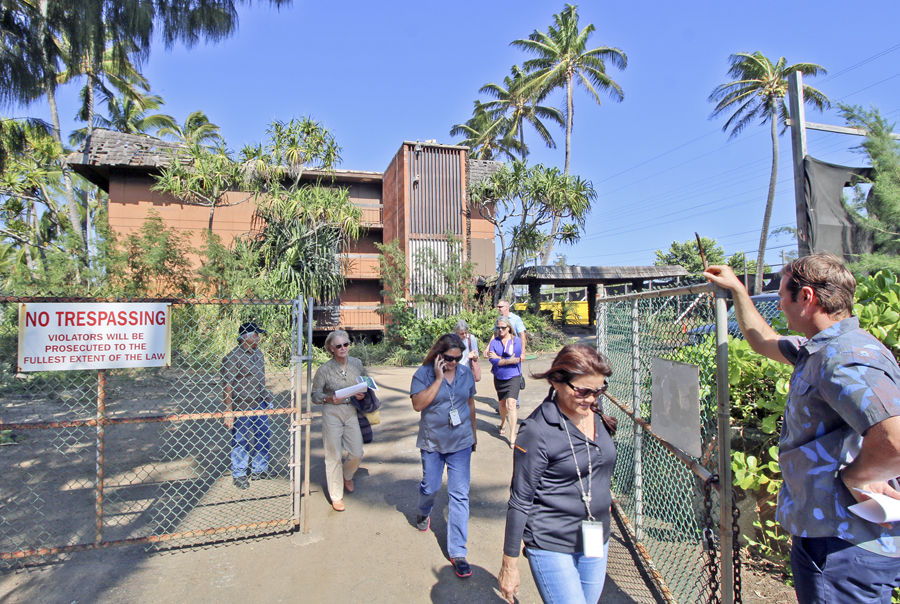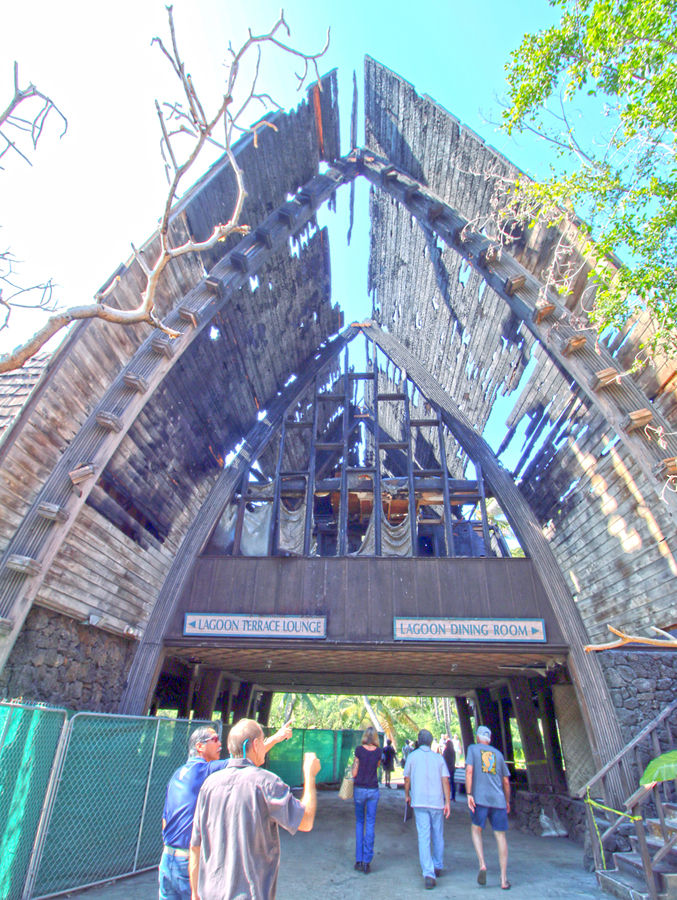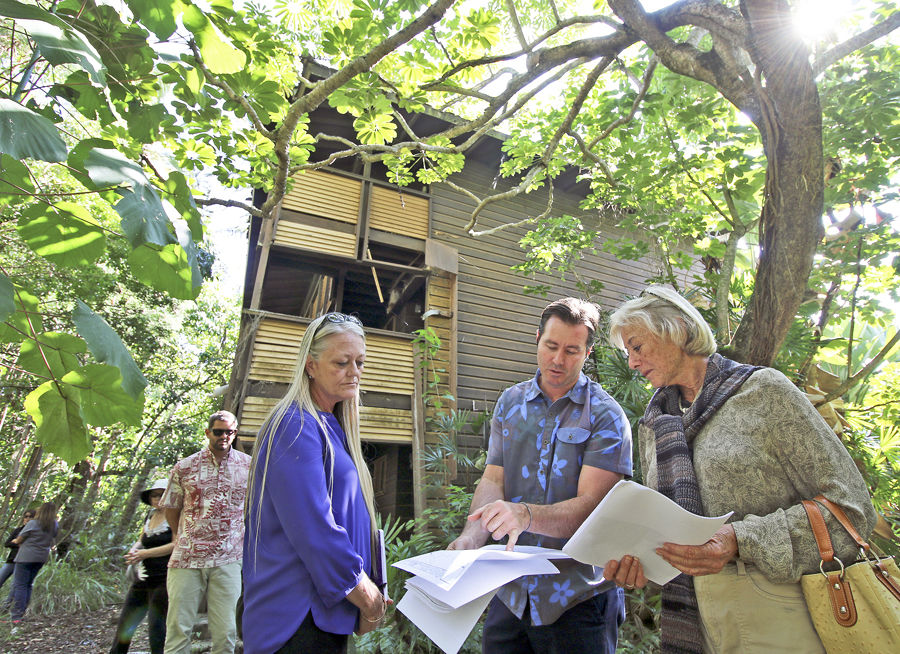WAILUA — As a place that once served as the home of Kauai’s last reigning queen, Deborah Kapule Kekaiha‘akulou, and the backdrop for the 1961 film “Blue Hawaii” starring Elvis Presley, there is no dearth of historical features at Coco Palms
WAILUA — As a place that once served as the home of Kauai’s last reigning queen, Deborah Kapule Kekaiha‘akulou, and the backdrop for the 1961 film “Blue Hawaii” starring Elvis Presley, there is no dearth of historical features at Coco Palms Resort.
Preserving that history while paving the way for a new Coco Palms Resort, however, is a question that several state and county agencies are still wrestling with.
It’s a balance that, some county and state officials acknowledge, won’t be easy to resolve.
“I think we’re in an unusual situation with this project because there have been entitlements for this project for years,” Deputy County Attorney Ian Jung said. “There are a lot of plans that were done on this project, and it’s extensive.”
There are also a lot of building requirements that must be met. The developers and Kauai Historic Preservation Review Commissioners on Thursday toured the grounds to survey portions of the property that are federally protected before they make a recommendation to the county Planning Commission, which has the authority to sign off on building permits.
Historic Preservation Review commissioners unanimously agreed that more information is needed to make any recommendation.
Plans call for 25 structures to be replaced or renovated, Deputy Planning Director Dee Crowell said. But 14 structures on the property are more than 50 years old, including the King’s Cottage and Queen’s Cottage, which must be elevated to meet current federal flood guidelines.
“They can rebuild, but they have to meet the new flood guidelines,” Crowell said.
Kapaa contractor Milton Ching said he is concerned that ancient remains (iwi kupuna) are still buried underneath Coco Palms and should be protected by the State Historic Preservation Division, Kauai Burial Council and Kauai Planning Department.
Work on the project was temporary halted last year after contractors found ancient remains while constructing a dust fence around the hotel property.
“When you find a grave that is unmarked and is inadvertently found, if any, there is a direct impact on that burial,” Ching said. “When that person died years ago, it was their intent to stay in place and never be disturbed. When Coco Palms was built back in the 1950s, they already disturbed them, period. So we get these guys coming in today and saying they’re going to build and reconstruct. When you do Earth movement, there’s going to be some movement in the ground.”
Lihue attorney Michael Belles, who is representing Coco Palms Hui, LLC, the Honolulu-based development company that’s seeking to redevelop Coco Palms, said meeting all the requirements will take diligent planning.
“This is not an easy application by any stretch of the imagination,” Belles said. “We’re dealing with multiple jurisdictions, and each one can pre-empt the other in some cases — they’re not always compatible or won’t always jive.”
Current plans, which will be considered by the county Planning Commission on Jan. 27, call for the development of 273 hotel rooms and 77 suites using the hotel’s existing footprint — a slight reduction from the 398 to 403 rooms that existed in the original hotel. Without a recommendation from the Historic Preservation Review Commission, approval on building permits may be difficult.
Many of the hotel’s well-known buildings, including the 650-square-foot Chapel in Palms, 4,800-square-foot Sea Shell Restaurant, 23,056-square-foot Queen’s Hall, and 11,208-square-foot Lagoon Lotus Room, would also be preserved and restored.
The hotel’s man-made fishpond, which runs through the middle of the resort, was also placed on the Hawaii Register of Historic Places in 2009 — a move that restricted significant alterations to it and placed the four bridges over it into question.
A 20-year-old building law designed to help businesses rebuild after Hurricane Iniki was extended for two years by the Kauai County Council in 2013 and exempted the projected from county building codes that changed after 1992.
It did not, however, exempt the project from current federal laws. So the developers have until the end of the year to secure permits. Coco Palms Resort architect Ron Agor said the goal is turn the project over to the resort operator, Hyatt Hotels Corporation, by February 2017.
“Our overreaching goal, when we set out on this journey, was to honor the past and celebrate the future, so we do understand that, in the midst of this, there are many delicate balances, and we are sensitive to them,” Coco Palms Hui LLC Principal Tyler Greene said. “It’s our obligation and responsibility to listen and absorb everything that we hear from the public and do our very best to address those.”




